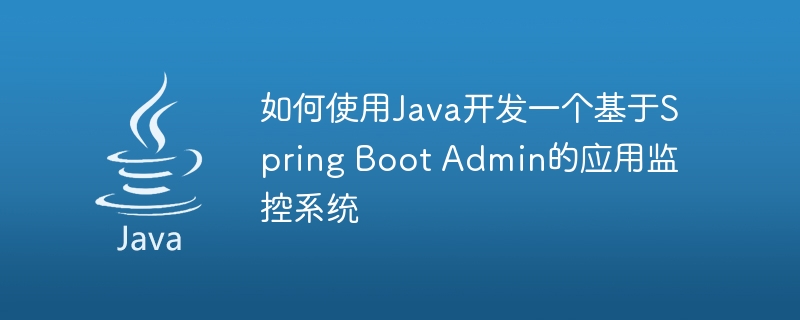

How to use Java to develop an application monitoring system based on Spring Boot Admin
With the rapid development and increasing complexity of Internet applications, how to effectively monitor and manage applications has become an important issue. As an excellent application monitoring tool, Spring Boot Admin plays an important role in the field of application monitoring and management. This article will introduce how to use Java to develop an application monitoring system based on Spring Boot Admin and provide corresponding code examples.
Preparation
Before we start, we need to prepare some necessary work:
Unzip the compressed package and import it into the IDE of your choice, and then import the project into the IDE.
Add Spring Boot Admin dependency
Add Spring Boot Admin dependency in the project's pom.xml file:
<dependency> <groupId>de.codecentric</groupId> <artifactId>spring-boot-admin-starter-server</artifactId> <version>2.4.3</version> </dependency>
Configure the application Monitoring
Add the @EnableAdminServer annotation to the main class of Spring Boot to enable the application monitoring function.
@SpringBootApplication
@EnableAdminServer
public class Application {
public static void main(String[] args) {
SpringApplication.run(Application.class, args);
}
}http://localhost:8080View the monitoring of Spring Boot Admin interface. Configuring the monitored application
We can register the application to be monitored with Spring Boot Admin. Add the Spring Boot Admin dependency in the pom.xml file of the monitored application:
<dependency> <groupId>de.codecentric</groupId> <artifactId>spring-boot-admin-starter-client</artifactId> <version>2.4.3</version> </dependency>
Then add the following in the application.properties (or application.yml) of the monitored application Configuration:
spring.boot.admin.client.url=http://localhost:8080
Summary:
This article introduces how to use Java to develop an application monitoring system based on Spring Boot Admin and provides corresponding code examples. By using Spring Boot Admin, we can easily monitor and manage applications and better ensure the stable operation of applications. Hope this article is helpful to you!
The above is the detailed content of How to use Java to develop an application monitoring system based on Spring Boot Admin. For more information, please follow other related articles on the PHP Chinese website!
